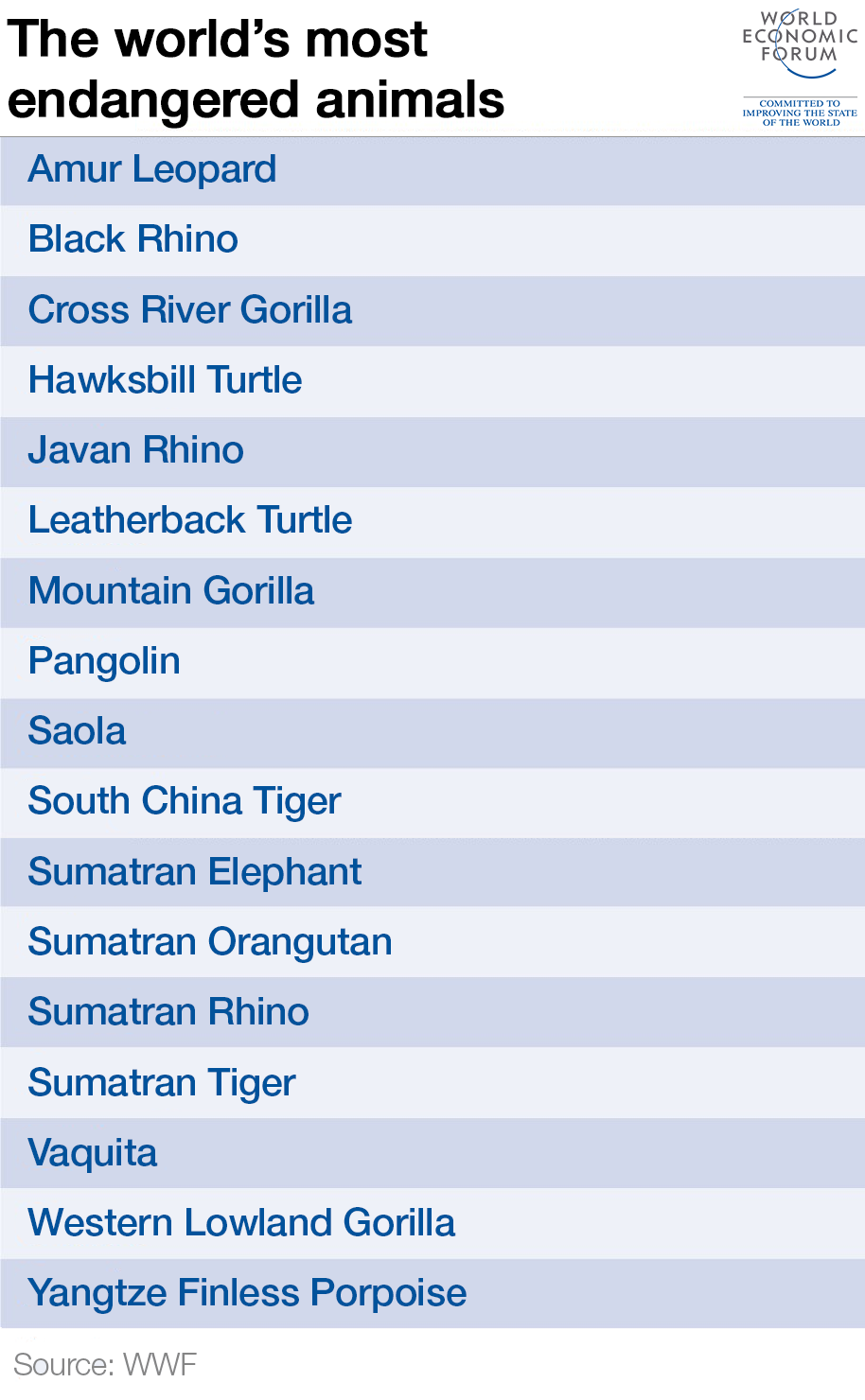These are the world’s critically endangered animals
Stay up to date:
Future of the Environment
There are 17 species on the World Wildlife Fund’s (WWF) critically endangered list. The South China tiger, which has not been seen in the wild for over 25 years and is classified as ‘functionally extinct’, tops the list.
The WWF argues that animal populations are disappearing at an alarming rate – there were over 4,000 South China tigers in the early 1950s – owing to poaching, habitat loss and overuse of animal resources.
The following chart is taken from the WWF’s critically endangered list.
Five species around the world have fewer than 100 animals in the wild, including the Javan and Sumatran rhinos, the Amur leopard and the vaquita – a type of porpoise found only in the northern Gulf of California.
The decline in black rhino numbers can be largely attributed to European hunters – at the peak, it was not unusual for five or six rhinos to be killed a day. Despite poaching, the numbers of Amur leopards are actually on the rise, up from just 30 cats in 2007.
The WWF says numbers of some species are unknown, while its list incorporates multiple species under leatherback turtles and pangolins.
To keep up with the Agenda subscribe to our weekly newsletter.
Author: Joe Myers is a Digital Content Producer at Formative Content.
Image: A South China tiger is seen at Shanghai zoo, July 8, 2008. REUTERS/Aly Song
Don't miss any update on this topic
Create a free account and access your personalized content collection with our latest publications and analyses.
License and Republishing
World Economic Forum articles may be republished in accordance with the Creative Commons Attribution-NonCommercial-NoDerivatives 4.0 International Public License, and in accordance with our Terms of Use.
The views expressed in this article are those of the author alone and not the World Economic Forum.
Forum Stories newsletter
Bringing you weekly curated insights and analysis on the global issues that matter.
More on Nature and BiodiversitySee all
Tom Crowfoot
May 27, 2025
Zoe Balmforth and Tim Duehrkoop
May 22, 2025
Jack Hurd and Florian Vernaz
May 21, 2025
Madeleine North
May 20, 2025
